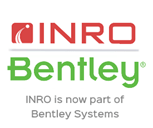CityPlan: A Land Use Transport Interaction Model for Victoria
Praveen Thakur, Renan Grace, Alistair Leak & Hugo Mackenzie-Rae
KPMG, Victoria
This presentation was delivered at the 2021 Online Conference Series and until October 2022 is only available to registered delegates and Content Access Pass holders via Interchange. For information on accessing this and other presentations please review the Content Access Pass options.
ABSTRACT
Australia’s cities are growing at a record pace. Melbourne alone is anticipated to reach a population of 8 million by 2051; an increase of 3.5 million from today. State and Federal government are investing heavily in transport ‘megaprojects’ to meet rising demand and address worsening congestion. These projects can each cost billions and take a decade or more to deliver.
Literature on economic geography and history demonstrates that strategic transport investments can shape our cities’ development. Our urban structures have always been heavily influenced by transport infrastructure and technologies. Despite this being a widely acknowledged fact, most transport business cases have cursory, missing or inconsistent consideration of land use impacts. Failure to capture these impacts in our strategies and business cases can lead to negative long-term outcomes like increased urban sprawl and rising congestion driven by induced demand.
In recognition of the above, the Victorian Department of Transport engaged KPMG to design and build a Land Use Transport Interaction (LUTI) model for Victoria known as CityPlan. CityPlan is a dynamic disequilibrium land use model implemented using the open-source UrbanSim theoretical framework and software.
CityPlan can be used to estimate the land use impacts of major transport investments and precinct initiatives, and to support integrated transport and land use planning. CityPlan interacts with the Victorian Integrated Transport Model (VITM) and is compatible with economic appraisal guidance and methods. This presentation introduces CityPlan and discusses its structure, inputs, applications, limitations and next steps.
Author(s)
Praveen Thakur | KPMG
Praveen is the national Lead Partner for Transport and Infrastructure for Management Consulting and leads the Future Mobility offering. He has extensive experience advising clients on electric and other zero emission vehicles, connected and autonomous vehicles, mobility-as-a-service, long term transport plans, transport policies and major transport infrastructure projects.
He has advised on transport projects such as Melbourne Metro, WestConnex and the Western Interstate Freight Terminal and is currently advising on the Melbourne Airport Rail Link. He has also authored a number of journal articles and thought leadership reports on a range of topics including transport technology and its impact on productivity, societal wellbeing and urban renewal impacts of transport.
Praveen led the development of Australia’s first agent and activity-agent based transport model (the KPMG Melbourne Activity and Agent Based Model) and used this to advise Infrastructure Victoria on the transport impact and infrastructure requirements of the Autonomous and Zero emission vehicles in Victoria.
Dr Alistair Leak | KPMG
Alistair is data scientist in KPMG’s Planning, Infrastructure Policy team at KPMG. He has over 10 years’ experience in data analytics, spatial analysis and visualisation spanning both professional services and academia. He has a passion for communication with focus on user-centric design and optimising how data (both qualitative and quantitative) are presented. Prior to joining KPMG, Alistair was a Research Associate at the UCL Centre for Advanced Spatial Analysis. Alistair completed his PhD at the UCL Department of Geography where he investigated the Applications of New Forms of Data to Demographics.
Renan Grace | KPMG
Renan is a transport economist with over a decade of experience on major transport infrastructure projects both in Australia and overseas. Renan's areas of expertise include strategic transport demand forecasting, agent and activity-based modelling, land use transport interaction modelling and emerging transport technologies. He has been instrumental in the development of several world-leading models including MABM (The Melbourne Activity and Agent Based Model) and CityPlan (a Land Use Transport Interaction Model for Victoria). He has also authored a number of research articles, conference papers and though leadership reports including on affordable living and autonomous vehicles.
Hugo Mackenzie-Rae | KPMG
Hugo is an urban planner in KPMG’s Planning & Infrastructure Policy team. His specialisation and passion lie within the integration of sustainable transport infrastructure and urban planning. He uses data analytics to support and convey robust infrastructure narratives. As an urban planner by trade he has been involved in the delivery of several strategies that aim to guide the regional developments. Hugo is passionate about the delivery of planning frameworks that will support future sustainable development, whilst also understanding how transport can be integrated in providing future mobility for its community.










